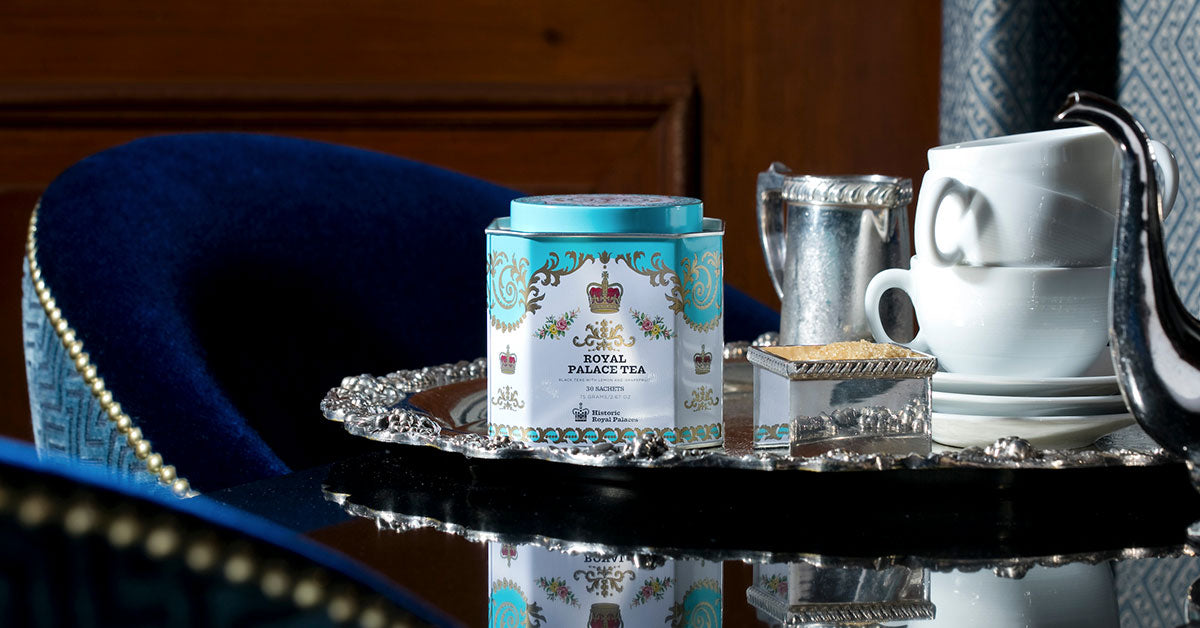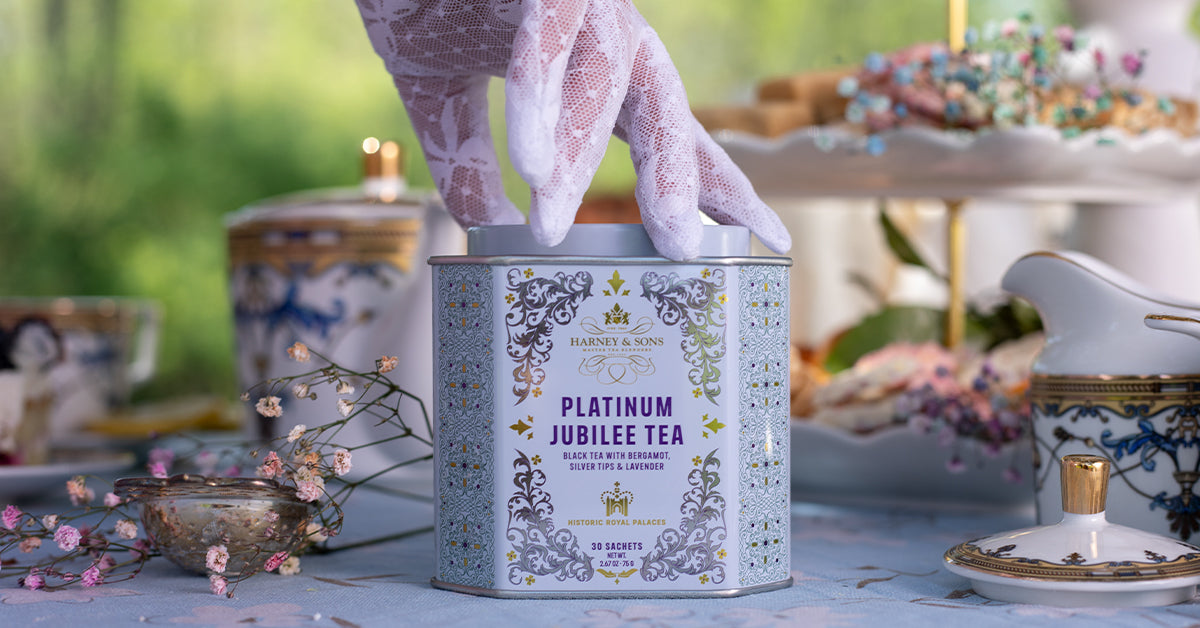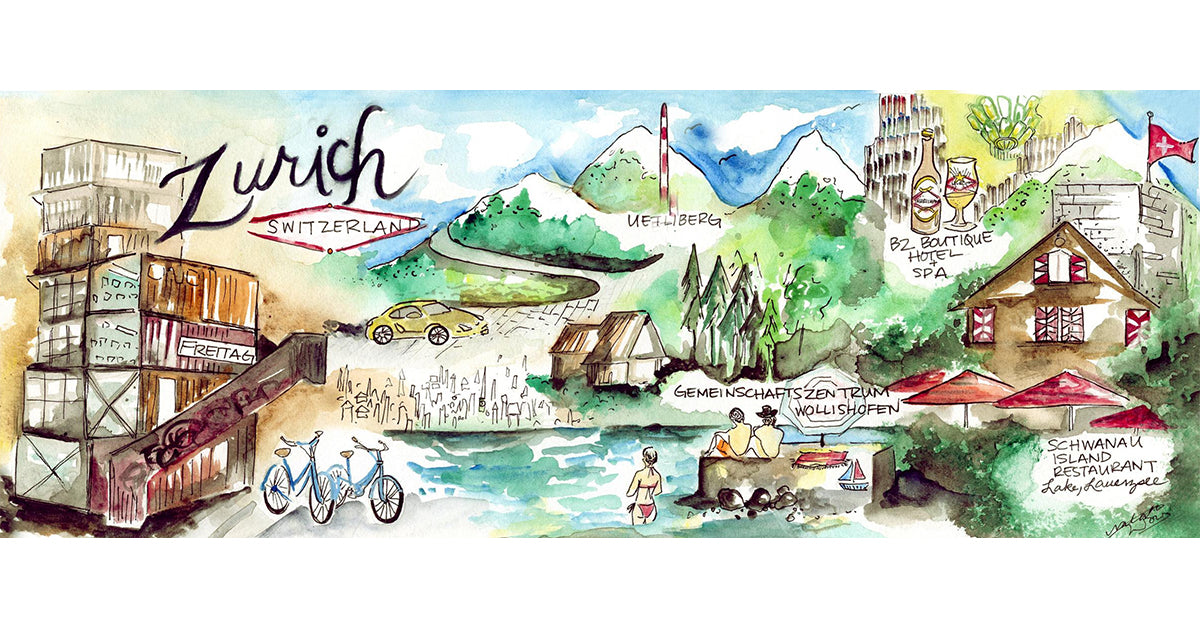As we approach the celebration of Queen Elizabeth’s Platinum Jubilee, an event for which all of England will be putting on the dog, we thought it would be a good time to dive into the story behind our HRP Collection and all its royal connections.
“HRP” stands for Historic Royal Palaces, an independent charity established by the British government in 1989 in order to care for five royal palaces. HRP later became an independent charity, and in 2014 took over the management of Hillsborough Castle in Northern Ireland in addition to the five palaces. With a theme of “We create space for spirits to stir and be stirred,” HRP states that they have a charitable duty to help everyone learn about the sites in their care. The history of the palaces span almost 1,000 years, and you can imagine the complex and rich history to be discovered in each.
Banqueting House. Two of Banqueting House’s most well-known attributes are the Ruben’s ceiling masterpiece, and that it was the site of King Charles I’s execution. Charles I had commissioned the ceiling to be painted by Flemish artist Sir Peter Paul Rubens. That epic ceiling is one of the last things the king saw before his execution outside the Banqueting Hall in 1649. We’re guessing he barely noticed.
 Hampton Court Palace. Most famously known as the home of King Henry VIII, Hampton Court Palace features the magnificent Great Hall where you can easily envision the famously lavish king holding court. The impressive Tudor Kitchens were the largest of Tudor England, with 200 servants and kitchen staff working to prepare 800 meals a day for the entire court. It is said that 1.3 million logs were burned in the kitchen every year to feed the constant fires required to cook all day long.
Hampton Court Palace. Most famously known as the home of King Henry VIII, Hampton Court Palace features the magnificent Great Hall where you can easily envision the famously lavish king holding court. The impressive Tudor Kitchens were the largest of Tudor England, with 200 servants and kitchen staff working to prepare 800 meals a day for the entire court. It is said that 1.3 million logs were burned in the kitchen every year to feed the constant fires required to cook all day long.

Hillsborough Castle and Gardens. Over 100 stunning gardens grace the grounds of Northern Ireland’s only royal residence of the royal family. It is still used by the family from time to time, as well as by prominent international visitors.
Kensington Palace. The birthplace of Queen Victoria and home to young royals for over 300 years, Kensington Palace and its gardens have been a central part of the British monarchy for generations. Currently home to the Duke and Duchess of Cambridge (aka Will and Kate) and their children as well as other members of the royal family, the public may tour the state rooms refurbished by HRP. After a two-year renovation, the rooms reopened to the public in 2012 in honor of the Queen’s Diamond Jubilee.
Kew Palace. This hidden royal gem in Kew Gardens was home to George III and Queen Charlotte. Today, you can explore the charm of Queen Charlotte’s Cottage, used by the royal family as a place to stop and have a rest and a spot of tea during walks. And if you can walk the 235 steps up the Great Pagoda, you’ll be treated to a wonderful view. Or stay on the ground and admire the colorful dragons gracing the Pagoda, restored to their original glory by HRP.

The Tower of London. Perhaps the most famous of all the residences cared for by HRP, the Tower is an iconic London landmark and a protected World Heritage Site. Rich in history, the Tower of London is also home to the Crown Jewels, a collection of 23,578 gemstones that have been and are still used in royal ceremonies. They are kept under armed guard in the Jewel House, so if you don’t want to be a long-term “guest” at the Tower, you’ll just admire appropriately.
All fascinating, of course, but you may still be wondering how HRP and Harney came to be a thing. It goes back to our founder and my grandfather, John Harney, when he was asked by HRP if he was interested in the licensing rights to market teas for these historic British palaces and thereby helping to support HRP’s work. Even though Papa John was of Irish descent, he couldn’t resist helping this historic British cause (and Hillsborough Castle is in Ireland, after all!).
We decided to create a new, octagon-shaped tin for this line of teas, and those Crown Jewels were the inspiration for the bright, jewel-toned tin colors, or “colours” as the Brits would spell it. We have become the largest licensor for Historic Royal Palaces, and we are proud to support an institution that is helping maintain and provide access to such important historic sites.
If traveling to England to visit these amazing places isn’t in your near future, you can bring a bit of British history to your door and help support Historic Royal Palaces’ work when you order HRP tea along with some crown jewels (in tin form) to your own palace.

Hot Cinnamon Spice. Our HRP Collection wouldn’t be complete without the tea that wears the crown around here! If you don’t already know, discover why HCS is our best-selling tea year after year. Look all you want for the added sugars in this tea, but you won’t find any (because they don’t exist!). Naturally sweet, spicy and satisfying.
Decaffeinated Hot Cinnamon Spice. Because decaf lovers should not be deprived.
Green Tea with Coconut, Vanilla and Ginger. An exotic green tea that is both sweet and savory, packaged in a brilliant green tin.
Peppermint Herbal. At the end of a long day of running your kingdom, a tummy-soothing, senses-pleasing peppermint herbal tea is just the ticket. Add a scone and some clotted cream for the full royal treatment.

Earl Grey Imperial. An imperial tea for a sophisticated collection, this blend was one of the five original teas in the HRP line. In a nod to how our friends across the pond prefer the strength of their tea, it’s a little stronger in body than our Earl Grey Supreme.
Royal English Breakfast. A stout blend of Ceylon Kenilworth and Kenyan Milima black teas that can handle the addition of milk and sugar and provide you with a hearty start to your day.
Victorian London Fog. The winner of one of our customer creation contests, this lovely tea is a blend of black and oolong teas along with bergamot, vanilla and lavender. It’s a smooth sip reminiscent of a traditional London Fog tea, which is Earl Grey served with steamed milk.

Tower of London Blend. When you’re commissioned to create a blend in honor of one of the most famous/infamous buildings in the world, you take it seriously! We made it reminiscent of Elizabethan preserves, with flavors of vanilla, bergamot, black currant, caramel and honey complementing a black/oolong tea base. Then we topped it off with an amethyst-colored tin to truly stand out from the rest.
Royal Palace Tea. A delightful black tea with notes of lemon and grapefruit, this tea was blended to be like a tea that may have been enjoyed in one of the palaces in the last century. The tin design is based on the HRP’s collection of royal china.
Enjoy these royal teas fit for royalty! Cheerio!
















2 comments
S. Davis
I have tried all of these teas except the Hot Cinnamon Spice. All of them are very good, and teas I would order again, but I have to say, Royal Palace tea is my favorite tea of all time. I do plan to try the Hot Cinnamon Spice later on in the Autumn.
I have tried all of these teas except the Hot Cinnamon Spice. All of them are very good, and teas I would order again, but I have to say, Royal Palace tea is my favorite tea of all time. I do plan to try the Hot Cinnamon Spice later on in the Autumn.
Joe Holdner
I’m sure that I am not alone in calling for you to come up with a tea blend that is as close as possible to Twinning’s discontinued Queen Mary’s blend. It is said it was a combination of Assam and Darjeeling teas. To my taste it was a superior blend.
I’m sure that I am not alone in calling for you to come up with a tea blend that is as close as possible to Twinning’s discontinued Queen Mary’s blend. It is said it was a combination of Assam and Darjeeling teas. To my taste it was a superior blend.